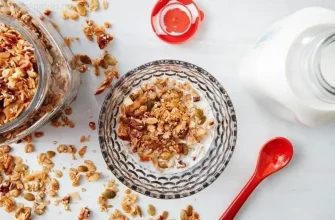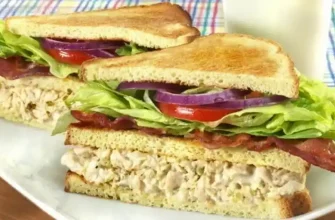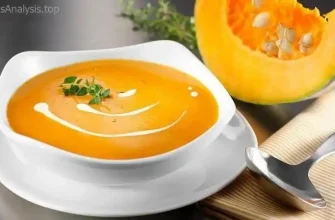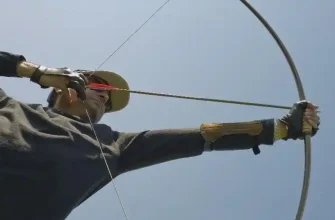When you think of hand-eye coordination, you might imagine an athlete catching a ball or a surgeon making delicate incisions. But in reality, hand-eye coordination plays a role in countless everyday activities—from typing on a keyboard to driving a car. It’s one of those fundamental skills that, often unnoticed, significantly influences how we interact with the world. The good news? Hand-eye coordination is not something you’re born with and can’t improve—far from it. Just like any skill, it can be developed and refined with practice.
In this guide, we’ll explore how you can improve hand-eye coordination, why it matters, and what science and research have to say about it. Along the way, we’ll look at practical tips, common pitfalls, and real-world advice on making tangible improvements. Ready to improve your coordination? Let’s get started.
What Is Hand-Eye Coordination?
Hand-eye coordination is the ability to use our vision to guide the movement of our hands. It requires the integration of visual input with motor control in a seamless, efficient manner. This means when you’re catching a ball, playing a video game, or even eating soup (without spilling it), your brain and body are working together to coordinate your hands with what your eyes see.
This skill is complex, involving multiple areas of the brain, including the occipital lobe (which processes visual information) and the motor cortex (which controls movement). Improving hand-eye coordination, then, requires stimulating these regions and developing their ability to work together efficiently.
Why Does Hand-Eye Coordination Matter?
Hand-eye coordination is crucial in nearly every aspect of life. It impacts:
- Everyday Tasks: Think about tying shoelaces, writing with a pen, or using a smartphone. These tasks rely on fine motor skills that are developed through hand-eye coordination.
- Sports and Physical Activity: Athletes from baseball players to gymnasts rely heavily on hand-eye coordination. It allows them to track moving objects, adjust their movements, and react to dynamic situations in real-time.
- Occupational Skills: Surgeons, pilots, engineers, and assembly line workers all need superior hand-eye coordination to perform their jobs accurately and safely.
- Cognitive Health: In children, it’s an essential skill for learning and development. In older adults, maintaining good coordination helps preserve cognitive function and prevents falls, a common cause of injury in older populations.
How to Improve Hand-Eye Coordination
Improving hand-eye coordination requires practice, patience, and consistency. Here are the most effective methods based on science and expert recommendations.
1. Engage in Target-Based Exercises
The more you practice hitting, catching, or moving toward a specific target, the better your brain gets at processing the visual information and coordinating your movements. Here are some effective exercises:
- Ball Games: Simple activities like tossing a ball against a wall and catching it, or playing catch with a partner, are excellent ways to improve hand-eye coordination. Try varying the speed and direction of the ball to increase the challenge.
- Video Games: Not just for kids, video games that require you to track and respond to moving objects can significantly enhance hand-eye coordination. Games that involve precision aiming and quick reflexes (such as action games or racing games) are particularly helpful.
- Juggling: If you can get the hang of it, juggling is a fantastic exercise for both hand-eye coordination and brain function. It forces you to keep your eyes on multiple objects at once, while your hands respond to each one.
- Target Practice: Shooting sports (with proper safety measures) or even something like archery can refine your ability to sync up visual perception with hand movements.
2. Incorporate Balance and Movement Training
A key aspect of coordination is balance, as it’s difficult to control your hands when your body isn’t stable. Improving overall coordination can be achieved by adding balance exercises to your routine.
- Yoga and Pilates: These practices involve maintaining control over your body while performing precise movements, which helps develop coordination. For example, holding a plank while moving your hands or legs can improve both balance and coordination.
- Tai Chi: This slow, deliberate martial art emphasizes controlled movements and balance, offering a great way to enhance coordination over time.
3. Fine Motor Skill Exercises
Small movements of the fingers and hands are a big part of hand-eye coordination. Fine motor exercises train your brain to guide your hands with precision.
- Writing and Drawing: Practice writing letters, doodling, or even doing intricate art work like coloring in small areas.
- Puzzles and Board Games: Activities like jigsaw puzzles, chess, or even working with building blocks require focused hand movements guided by visual input.
- Musical Instruments: Learning an instrument, particularly one that requires finger dexterity (such as the piano or guitar), is another great way to boost hand-eye coordination.
4. Stay Active and Build General Fitness
The better shape you’re in overall, the better your body and brain will function in coordination tasks.
- Aerobic Exercise: Activities like running, swimming, or cycling improve blood flow to the brain and promote neuroplasticity—the brain’s ability to reorganize and form new connections. This can have a direct impact on improving hand-eye coordination.
- Strength Training: Building muscle strength helps with physical coordination and allows for more controlled, purposeful movements.
5. Visual Training
Hand-eye coordination begins with how we process what we see. Improving visual tracking and focus can go a long way in improving your coordination.
- Eye Exercises: Practice focusing on an object close to you, then shifting focus to something farther away, and repeating the cycle. This helps strengthen your eye muscles and improves the speed at which your brain processes visual stimuli.
- Speed Drills: Involving your eyes in quick, directional shifts (like following a moving object or watching a clock’s second hand) enhances your brain’s ability to track moving objects and direct your hands accordingly.
Pitfalls and Challenges
While improving hand-eye coordination is definitely achievable, it’s important to keep in mind a few potential challenges:
- Age-related Decline: As we age, our coordination naturally declines. However, regular practice and exercise can slow down this process. Activities like tai chi, dancing, or any form of physical exercise can keep your coordination sharp even into old age.
- Injury: If you’ve experienced a hand or eye injury, it may take longer to rebuild coordination. In these cases, physical therapy or vision therapy can help guide recovery.
- Overtraining: Like any skill, there’s a risk of overtraining and burnout. Make sure to take regular breaks and allow your body time to recover.
Real-World Advice
Let’s take a look at what different people from around the world say about improving hand-eye coordination:
- Megan, 32, USA: “I’ve always been into video games, and I’ve noticed that my hand-eye coordination has improved just from years of gaming. But I also started incorporating more balance exercises, like yoga, and it’s made a huge difference. It’s not just about my reflexes, but how stable I feel overall.”
- Javier, 56, Spain: “I was always a runner, but after my knee injury, I tried something different—juggling. At first, I was terrible, but I stuck with it. Now, I can juggle three balls, and I’ve noticed my hands are more accurate in everything from using my phone to drawing.”
- Amina, 45, Nigeria: “I work as a surgeon, and I’ve always been very aware of my coordination. I practice on simulators regularly to keep my skills sharp. But I also play badminton with my kids—helps keep me agile and mentally sharp.”
- Jack, 64, UK: “I’ve never been particularly athletic, but I started doing Pilates a few years ago, and it has completely changed how I feel about my body. I’m more coordinated, I don’t trip as much, and I can even touch my toes now!”
Final Thoughts
Hand-eye coordination is a skill that impacts nearly every aspect of our lives, and improving it can be both fun and highly beneficial. Whether through sports, exercises, or daily activities, there are countless ways to enhance this crucial skill. It’s never too late to start, and with patience and consistency, you can see real improvements. So, what are you waiting for? Start improving your hand-eye coordination today—you never know, maybe juggling will become your new hobby!









